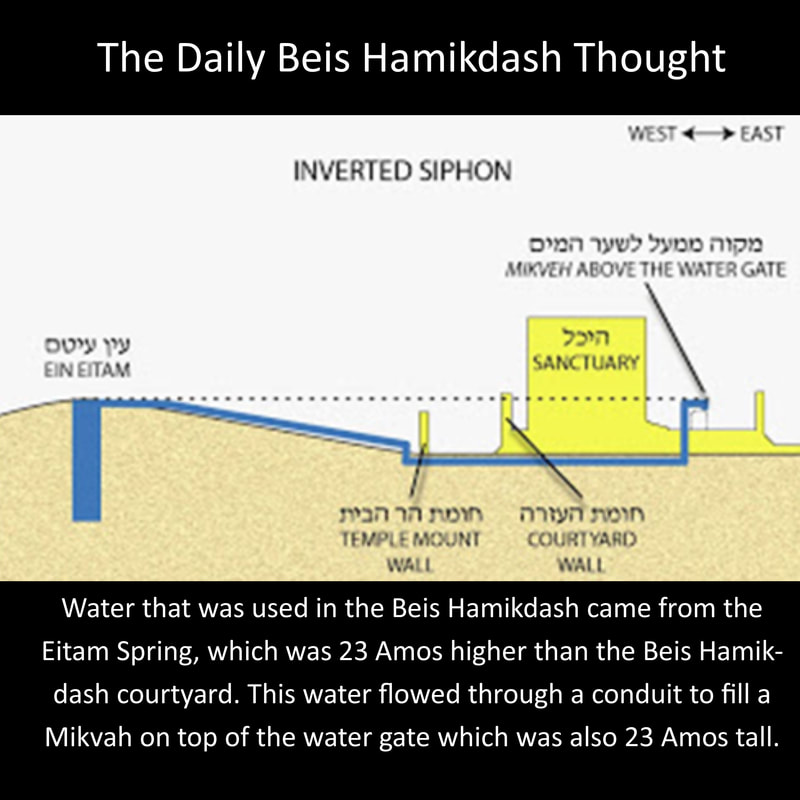|
The water used in the Temple was sourced from the nearby spring, Ein Eitam. Our sages identify Ein Eitam as being the highest point in Eretz Yisrael.
One of the Mikvaos in the Beis Hamikdash was built on top of the Water Gate. This Mikvah was used by the Kohen Gadol on Yom Kippur for his first of 5 immersions. The Temple gates were 20 Amos (approximately 10 metres) high. The measurements of a Mikvah are (minimum) 1 by 1 Amah with a depth of 3 Amos. Therefore, the water level in this Mikvah would have been 23 Amos above the courtyard floor. The water would flow down from Ein Eitam towards the Beis Hamikdash and then brought up with an inverted siphon effect to fill this Mikvah. Due to natural pressure, water in an inverted siphon will always find a level. Since this level cannot be higher than the original source of the water, our sages deduce that the Eitam spring must also have been 23 Amos above the courtyard level. If you want to raise water to a level higher than its source, an outside force, such as a pump, is required. The Neshama, like water flowing downhill, descends from its lofty spiritual source into a body down here in the physical world. This descent is for the purpose of achieving an even greater elevation. But without any outside force, the Neshama cannot rise higher than the source from which it came. Torah and Mitzvos act like a pump. When the Neshama keeps Torah and Mitzvos in this world and engages in refining the body and animalistic soul, it reaches levels of connection to Hashem which are far deeper than the Neshama would have otherwise experienced. This powerful G-dly force pumps the Neshama up to the highest of heights.
0 Comments
Leave a Reply. |
All posts
Read today's Beis Hamikash Thought Archives
July 2023
|

